I’ve been gardening without spending very much at all for years now and what started out as an experiment for my Guardian gardening blog , became over time simply what I do. For me it’s as much about the enjoyment I get from making better use of what I already have around me, as the actual money saving itself.
Like a lot of people; I don’t have a lot of time to garden so why muck about with procedures and processes if they aren’t really needed (at all)? A spot of grow your own becomes even more rewarding (and fun) when you do things that make sense to you and work for your individual spot, rather than just following instructions on what you’re supposed to do.
Here are just a few of my tried and tested tricks to help you on your merry money and workload-saving way…
Find a few bartering buddies
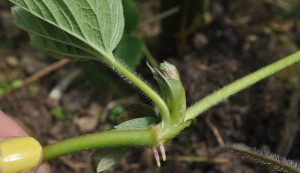
One of the easiest (and most enjoyable) things you can do is to find yourself some fellow gardeners with which to do ‘swopsies’. Allotment holders have long been privy to the joys of good old fashioned barter and exchange but there’s no reason why we can’t all benefit.
Bartering with friends, family, neighbours, (whoever you can in fact), saves money by enabling you to get your hands on new varieties of seed, plants and fruit bushes in exchange for surplus stocks of your own. It can also save time if you look at other ways of helping each other out; whether it’s borrowing equipment that will enable you to do a job a lot quicker or getting some actual physical help. Best of all it’s civilised in a way that much of modern society is sadly, increasingly not.
THE EASIEST MONEY SAVING TRICKS
People giving it away for free
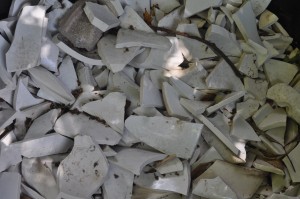
Your local freecycle group is a fantastic source of materials although you’ll need to be quick off the mark as items soon get snapped up.
Otherwise a tree surgeon can potentially provide you with as much wood chip as you could possibly ever use. Builders’ merchants also usually have pallets going spare if you ask nicely. This wood is often high quality and can be used for everything from making raised beds and fencing through to making a frame for your compost pile.
The wonder of leaf-mould
Use the many leaves that your trees bountifully shed each year to make a highly effective compost into which to plant your seeds. It really is an amazing (and free) resource.
Have your cut
Rather than buying in new shrubs and bushes why not take cuttings from your existing plants or from those of people you know. If you don’t ask you don’t get.
Make your own compost
It’s truly one of the best things you can do.
Start collecting seed
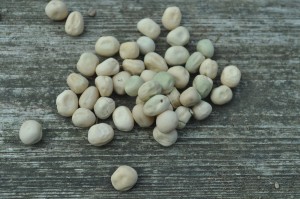
It’s easy to home save seed from peas, tomatoes, french beans, lettuce, rocket and radish just for starters. These amazing home-produced capsules will have adapted perfectly to conditions in which they’ve been formed so you’ll in effect have created the best seed possible for your location. This is surely a most enticing prospect alongside saving a few quid. Find out more here.
Don’t throw out seeds
If a packet of seed is a few years out of date don’t throw it away –just sow seed more thickly than you would do otherwise.
Using supermarket leftovers
I can’t enthuse enough about the fact that many shop-bought fruit and vegetables can be reliably grown on to provide you with free and exciting plants and produce. Just some of the best include garlic, herb pots, plum, apricots and peaches.
Look after your tools and they’ll look after you
Replacing blunt or rusted tools can be expensive but if you look after them properly – they should last for years to come. Even the rustiest- looking secateurs might well be salvageable with a good rub down with wire wool, sharpen and oil.
No nonsense time saving ideas
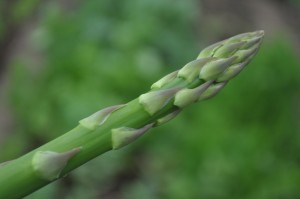
Scrub away – You don’t need to spend time meticulously scrubbing down your pots and planting trays before use in the spring. Honestly you don’t. If you had a diseased plant or bug infestation (such as aphid) then yes clean them; you’ll need to get rid of the little blighters and their offspring. But otherwise just give everything a shake and a quick glance to make sure it’s all bug (and egg) free and then plant away.
Grow perennials – With limited maintenance you can reap the rewards of their harvest year after year. Choose from rhubarb, asparagus, cardoon, globe artichoke, Jerusalem artichoke, oca, garlic mustard, sorrel, lovage, sea kale and many others.
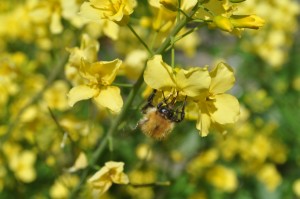
There’s life in the old kale yet – Speaking of perennial; you’d be surprised how much life (and produce) you can get out of plants that you wouldn’t have thought had it in them. I first got the idea from a botanist friend who suggested cutting my broccoli plants back quite harshly after harvesting because this might encourage them to continue being productive. It did and this technique continues to work. They will attempt to flower and set seed so just keep harvesting the stems. This technique also works well with purple sprouting broccoli and kale in particular.
Don’t dig too much for victory
Too much digging breaks up the beneficial microbes in the soil and leaves it exposed to the extremes. Rather than digging in compost or muck each year just apply it on top, kick back and let the worms do all the hard work for you.
Go a little wild and let some of your plants self-seed
Parsley seed can be a bit tricky to germinate but will scatter its seed readily into its second year (as a biennial) producing a real bounty of good quality seedlings for you to use and give away. Rocket and salad leaves (annuals) are also worth experimenting with.
A version of my article first appeared in the February issue Grow Your Own Magazine
